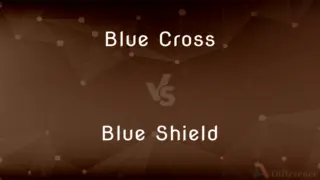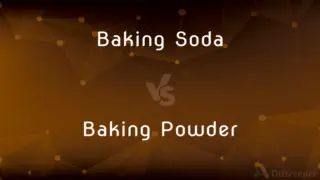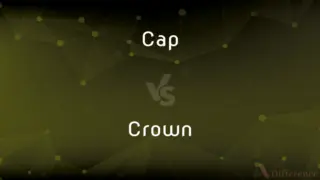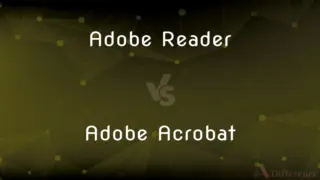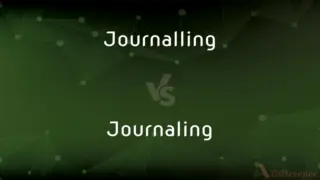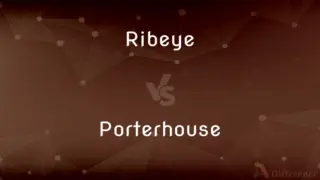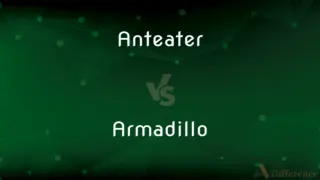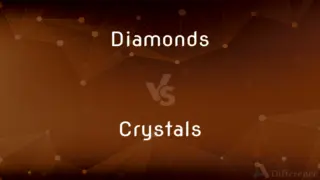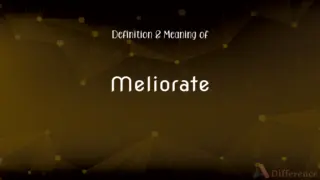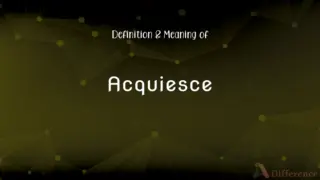Grout vs. Mortar — What's the Difference?
Edited by Tayyaba Rehman — By Fiza Rafique — Updated on April 15, 2024
Grout is used to fill gaps for tiling, maintaining a smoother, thinner consistency, whereas mortar provides a bonding agent between bricks and stones with a thicker, sturdier composition.

Difference Between Grout and Mortar
Table of Contents
ADVERTISEMENT
Key Differences
Grout is specifically designed to fill the spaces between tiles, offering a fluid form that allows it to easily flow into and fill gaps completely. Whereas mortar is used primarily as a bonding element between bricks and stones, possessing a thicker, more workable consistency that ensures strong adhesion.
Grout does not provide significant structural strength but is excellent for aesthetic finishing and waterproofing tiled surfaces. On the other hand, mortar is essential for structural stability, making it indispensable in masonry work.
While grout is available in many colors to match or contrast with tiles, mortar typically comes in natural shades and is not often used where color match is critical.
Grout cures to a non-load-bearing finish, ideal for minimal movement environments, whereas mortar develops a hard, load-bearing finish suited to supporting building structures.
Maintenance of grout involves regular cleaning and sometimes resealing to prevent stains and degradation, whereas mortar is low maintenance but may require repointing if it cracks or erodes.
ADVERTISEMENT
Comparison Chart
Purpose
Fills gaps between tiles
Bonds bricks and stones
Consistency
Smooth, thin
Thick, workable
Strength
Non-load-bearing, weaker
Load-bearing, stronger
Color Variety
Wide range of colors
Limited, natural tones
Maintenance
Requires cleaning, possible resealing
May need repointing, less frequent upkeep
Compare with Definitions
Grout
A dense fluid used for filling gaps.
The contractor used grout to seamlessly fill the spaces between the kitchen tiles.
Mortar
A key element in masonry construction.
Proper mortar application is crucial for the structural integrity of the wall.
Grout
Prone to staining and requires maintenance.
The bathroom grout needs regular cleaning to prevent mold buildup.
Mortar
Composed primarily of cement, lime, and sand.
The right lime content in mortar can enhance its durability.
Grout
A composition for sealing joints in tiling.
Grout must be applied carefully to avoid uneven lines.
Mortar
A mixture used to bind building materials.
Mortar is essential for securing bricks in wall construction.
Grout
Typically made from a mixture of water, cement, and sand.
Mixing grout requires precise water to cement ratios for optimal consistency.
Mortar
Cures to a hard, durable finish.
Once the mortar cures, it forms a permanent bond between the stones.
Grout
Available in sanded and unsanded forms.
Sanded grout is preferable for larger joints for its added strength.
Mortar
Less varied in color, focusing on strength.
Mortar’s color does not affect its performance in the building’s structure.
Grout
Grout is a dense fluid which is used to fill gaps or used as reinforcement in existing structures. Grout is generally a mixture of water, cement, and sand and is employed in pressure grouting, embedding rebar in masonry walls, connecting sections of pre-cast concrete, filling voids, and sealing joints such as those between tiles.
Mortar
A short smooth-bore gun for firing shells (technically called bombs) at high angles
Mortars and machine guns
Nine civilians died in a horrific mortar attack
Grout
A thin mortar used to fill cracks and crevices in masonry.
Mortar
A cup-shaped receptacle in which ingredients are crushed or ground, used in cooking or pharmacy
A pestle and mortar
Grout
A thin plaster for finishing walls and ceilings.
Mortar
A mixture of lime with cement, sand, and water, used in building to bond bricks or stones.
Grout
Often grouts Chiefly British Sediment; lees.
Mortar
Attack or bombard with a mortar
At first light the mortaring and sniping started
The Commando positions were being heavily mortared
Grout
To fill or finish with a thin mortar or plaster.
Mortar
Fix or join using mortar
The pipe can be mortared in place
Grout
A thin mortar used to fill the gaps between tiles and cavities in masonry.
Mortar
A vessel in which substances are crushed or ground with a pestle.
Grout
(archaic) Coarse meal; groats.
Mortar
A machine in which materials are ground and blended or crushed.
Grout
Dregs, sediment.
Mortar
A portable, usually muzzleloading cannon used to fire shells at low velocities, short ranges, and high trajectories.
Grout
A kind of beer or ale.
Mortar
A shell fired by such a cannon.
Grout
To insert mortar between tiles.
I spent the whole afternoon grouting the kitchen floor.
Mortar
Any of several similar devices, such as one that shoots life lines across a stretch of water.
Grout
To affix with mortar.
Mortar
A short, usually stationary, muzzleloading cannon used from the 1700s to early 1900s to fire large round shells at low velocities, short ranges, and high trajectories.
Grout
Coarse meal; ground malt;
Mortar
Any of various bonding materials used in masonry, surfacing, and plastering, especially a mixture of cement or lime, sand, and water that hardens in place and is used to bind together bricks or stones.
Grout
Formerly, a kind of beer or ale.
Mortar
To bombard with mortar shells.
Grout
Lees; dregs; grounds.
Mortar
To plaster or join with mortar.
Grout
A thin, coarse mortar, used for pouring into the joints of masonry and brickwork; also, a finer material, used in finishing the best ceilings.
Mortar
(uncountable) A mixture of lime or cement, sand and water used for bonding building blocks.
Grout
To fill up or finish with grout, as the joints between stones.
Mortar
(countable) A muzzle-loading, indirect fire weapon with a tube length of 10 to 20 calibers and designed to lob shells at very steep trajectories.
Grout
A thin mortar that can be poured and used to fill cracks in masonry or brickwork
Mortar
(countable) A hollow vessel used to pound, crush, rub, grind or mix ingredients with a pestle.
Grout
Bind with grout;
Grout the bathtub
Mortar
(countable) In paper milling, a trough in which material is hammered.
Mortar
(transitive) To use mortar or plaster to join two things together.
Mortar
(transitive) To pound in a mortar.
Mortar
To fire a mortar (weapon).
Mortar
To attack (someone or something) using a mortar (weapon).
The insurgents snuck up close and mortared the base last night.
Mortar
A strong vessel, commonly in form of an inverted bell, in which substances are pounded or rubbed with a pestle.
Mortar
A short piece of ordnance, used for throwing bombs, carcasses, shells, etc., at high angles of elevation, as 45°, and even higher; - so named from its resemblance in shape to the utensil above described.
Mortar
A building material made by mixing lime, cement, or plaster of Paris, with sand, water, and sometimes other materials; - used in masonry for joining stones, bricks, etc., also for plastering, and in other ways.
Mortar
A chamber lamp or light.
Mortar
To plaster or make fast with mortar.
Mortar
A muzzle-loading high-angle gun with a short barrel that fires shells at high elevations for a short range
Mortar
Used as a bond in masonry or for covering a wall
Mortar
A bowl-shaped vessel in which substances can be ground and mixed with a pestle
Mortar
Plaster with mortar;
Mortar the wall
Common Curiosities
Is grout available in different colors?
Yes, grout comes in a variety of colors to match or contrast tile colors.
Can mortar be used for tiling?
Mortar can be used for setting tiles but not for filling gaps between them.
What is the primary use of grout?
Grout is primarily used to fill gaps between tiles.
What are the main components of grout?
Grout is mainly made of water, cement, and sometimes sand.
What makes mortar different from concrete?
Mortar has a higher water content and finer grain than concrete, making it less suitable for load-bearing applications.
What is the primary function of mortar?
Mortar primarily serves as a bonding agent in masonry.
What causes grout to stain?
Grout can stain due to its porous nature, which absorbs liquids easily.
What maintenance does grout require?
Grout may require periodic cleaning and resealing to maintain its appearance.
How does mortar contribute to a building’s structure?
Mortar provides structural integrity by bonding stones and bricks together.
Can grout be used in place of mortar?
Grout should not be used as a substitute for mortar in structural applications.
How does the curing process affect mortar?
As mortar cures, it becomes hard and durable, essential for structural support.
Are there different types of grout?
Yes, grout can be either sanded or unsanded, depending on the size of the tile gaps.
Share Your Discovery

Previous Comparison
Cereal vs. Porridge
Next Comparison
Multiplexer vs. EncoderAuthor Spotlight
Written by
Fiza RafiqueFiza Rafique is a skilled content writer at AskDifference.com, where she meticulously refines and enhances written pieces. Drawing from her vast editorial expertise, Fiza ensures clarity, accuracy, and precision in every article. Passionate about language, she continually seeks to elevate the quality of content for readers worldwide.
Edited by
Tayyaba RehmanTayyaba Rehman is a distinguished writer, currently serving as a primary contributor to askdifference.com. As a researcher in semantics and etymology, Tayyaba's passion for the complexity of languages and their distinctions has found a perfect home on the platform. Tayyaba delves into the intricacies of language, distinguishing between commonly confused words and phrases, thereby providing clarity for readers worldwide.













